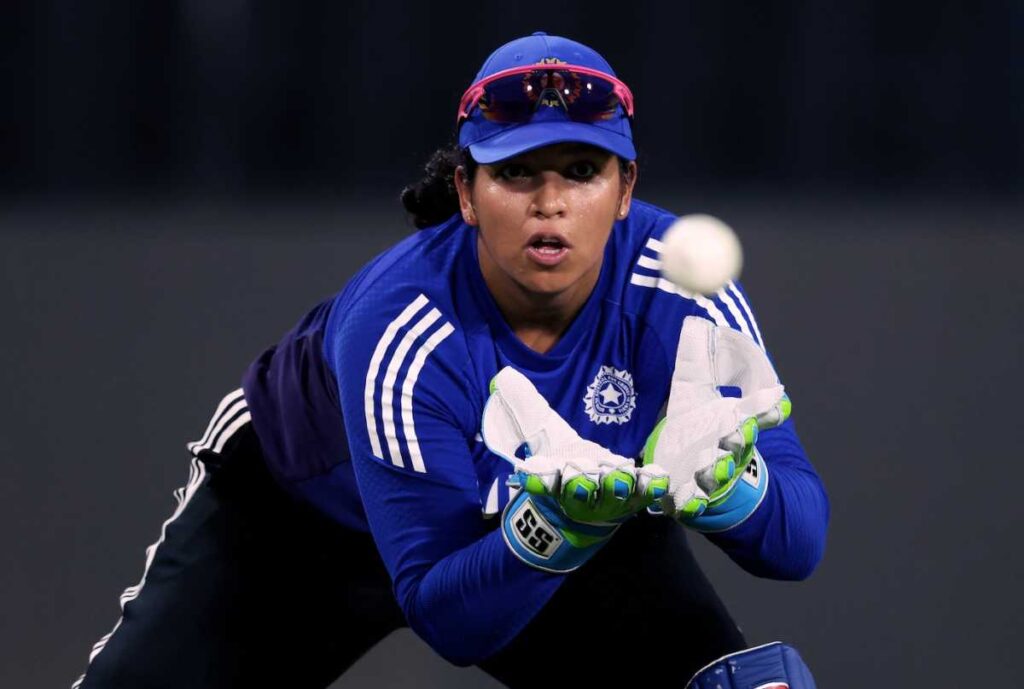
Snehasis Mukherjee in Visakhapatnam
India have made it two wins in two games, defeating Sri Lanka and Pakistan so far in the ongoing ICC Women’s Cricket World Cup.
The performance, in all three departments, is yet to reach the top level. In both games, there were moments when the Women in Blue were under pressure.
Against Pakistan, the batters failed to deliver and the bowlers were not lethal enough to bowl them out for a low score. They could have finished the game earlier, with many overs to spare.
For bowlers to be effective, fielders must support them by taking catches and converting chances. Sidra Amin, the top-scorer for Pakistan with 81, was dropped four times — thrice by Richa Ghosh and once by N Shree Charani off her own bowling.
Benefit of doubt can be given to Charani, as her chance was a tough one. But the three Richa dropped, plus the one offered by Sidra Nawaz, were all straightforward.
For a first-choice wicketkeeper, those were regular takes, but Richa’s errors left everyone frustrated. Ironically, it was Richa who had played a vital unbeaten knock of 35 off 20 balls to help India reach close to the 250-run mark. But her missed chances behind the stumps overshadowed that contribution.
For More Exciting Articles: Follow RevSportz
At one stage, Pakistan were 26/3. Had those catches been taken, India’s bowlers could have wrapped up the innings much earlier.
Richa’s wicketkeeping has always raised questions. In Colombo, her movement behind the stumps was off — she often took an early trigger step towards the left, and when the ball went the other way, all she could do was dive late, leading to misjudged takes.
This isn’t a new issue. It was first pointed out during the 2024 T20 Women’s World Cup, when she dropped a simple high catch against New Zealand. After that, she was seen practising that specific type of catch with a support staff. It was good to see her working on it, but the question remains — why the reactive approach?
Whether it’s Richa or anyone else, players must be ready for every possible situation. These crunch moments often decide the team’s fate.
During that T20 World Cup, India had long fielding sessions. But when it came to full commitment and diving efforts, only Jemimah Rodrigues and Shreyanka Patil stood out. Others dropped several catches — a worrying sign that continued. The management has spoken about improving fielding, but consistency is missing.
Take Sri Lanka’s example from the first match. Their players threw themselves around the field, showing intensity and energy till the last 20 overs.

Against top teams like South Africa, New Zealand, Australia, and England, India will have to step up. They must grab every opportunity and make their power count if they want to go deep in this tournament.
Also Read: CWC 2025: Below-par India good enough to make it 12-0 against Pakistan





